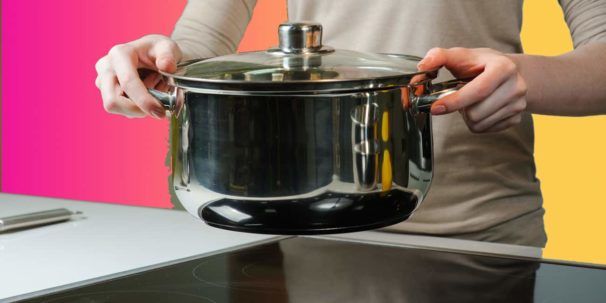Making a FutureLearn course (a recipe)
In the first of three posts about making FutureLearn courses, Matt Jenner, our Learning Developer, shares what goes into making a FutureLearn course.

Making a FutureLearn course is a fun, exciting and sometimes complicated process. To make it a bit simpler I’m going to use an old familiar metaphor: the recipe.
Let’s start by taking a look at what we’re cooking up today: one course.
More specifically, one course that:
- Tells stories – every course should tell a story, this should include a clear structure and taking the learner on a journey of exploration.
- Provokes conversation – we don’t want a bland meal! We want one that gets people talking. We’re firm believers in social learning and we have over 50 years of experience, thanks to the UK’s Open University.
- Celebrates progress – throughout every course there should be moments for celebration so learners can feel proud of their progress.
We aim to ensure every single course on FutureLearn embodies these principles and our platform is designed to facilitate them at every stage of design and development.
Now we know what we’re cooking, it’s time to examine exactly what goes into a story-telling, conversation-provoking, progress-celebrating course. What ingredients are we using?
Ingredients
A large selection of ideas
Every course begins as an idea, or more often than not – lots of ideas. They are usually brought to us by an organisation (typically existing partners, sometimes organisations looking to become partners) and we work with the team and educators to help them filter them. Sometimes these ideas are very specific, sometimes they’re vague and exploratory. Once a broad idea has been decided for the course, it’ll then be refined as it goes through our course design and development process.
A group of dedicated, creative people
These might be researchers, academics or industry professionals telling stories, sharing experiences and giving their perspective on the topic of the course. However these are just examples of the visible people involved – there are many more involved in the creation of a course behind the scenes (we’ll cover them in more detail in a future post very soon).
A fascinating course topic
Courses will always be focused around an educator’s key discipline, a strong topic for an institution or an area that is missing in our portfolio of courses. The course topic is a guide for the course; it helps to set the structure, tone, approach, difficulty, duration and many other factors.
Rich course content
One of the most important ingredients. Course content is created by a whole raft of people and usually spans audio, videos, articles, quizzes but we’ve also had interactive games, simulations, experiments, image galleries, interviews and more. This rich content gives the course it’s weight.
Learner’s contributions and engagement
FutureLearn courses are built around discussion, with comment sections and discussion steps filled with learner voices. A course has little flavour until it’s full of learner interactions: likes, comments, replies all bring depth and nuance. If educators provide the structure and the filling, learners add the flavour that holds it all together.
Method
1. Take a fascinating topic, a large handful of ideas, a group of people and mix well
The topic guides the whole experience for everyone involved so make sure you pick a good solid one. Then you want to squeeze the topic a little, until some ideas start to emerge. Be sure to have an open space for ideas, you want to let them breathe. Finally sprinkle in a set of smart, enthusiastic people who will help the mix come together nicely.
2. Leave filtered ideas to stew over a short period
Sometimes a clear idea emerges right at the start. Other times ideas may need stirring, mashing and mixing to get to something interesting and usable.
3. Begin moulding course content around the idea
Once your idea is looking firm, you will start to shape some course content. When we do this, we have to be mindful of the level of the course – not all courses are introductory, some are graduate or post-graduate level, so this will affect the complexity of the resources and activities you blend together. Also: remember If the course looks a bit full – take things out while you can, they can always be preserved for the future.
4. Bake in places for discussion
Learner discussion is integral to a course, so you’re going to want to ensure the are plenty of things for learners to talk about. Don’t beat all the gaps out of your course – you want space for dialogue.
5. Serve and adjust to taste
Now all your ingredients are nicely baked together (be sure to do some tasting and testing yourself) you need to serve it up for hungry learners to enjoy. However, it’s never quite finished – as the course progresses it’s up to educators to facilitate discussion and add even more flavour where needed.
Plus – a FutureLearn course is also made of other ingredients like money, time, energy and media. With such a lot of investment, measuring the impact of a course is really important, so we do lots of testing and surveying, during and after a course so we can improve experiences in future, much like a chef regularly checking their recipe still works.
This post is the first of a mini-series about making FutureLearn courses. Keep an eye out for the other two (no more metaphors, we promise) or in the meantime check out Making FutureLearn.




